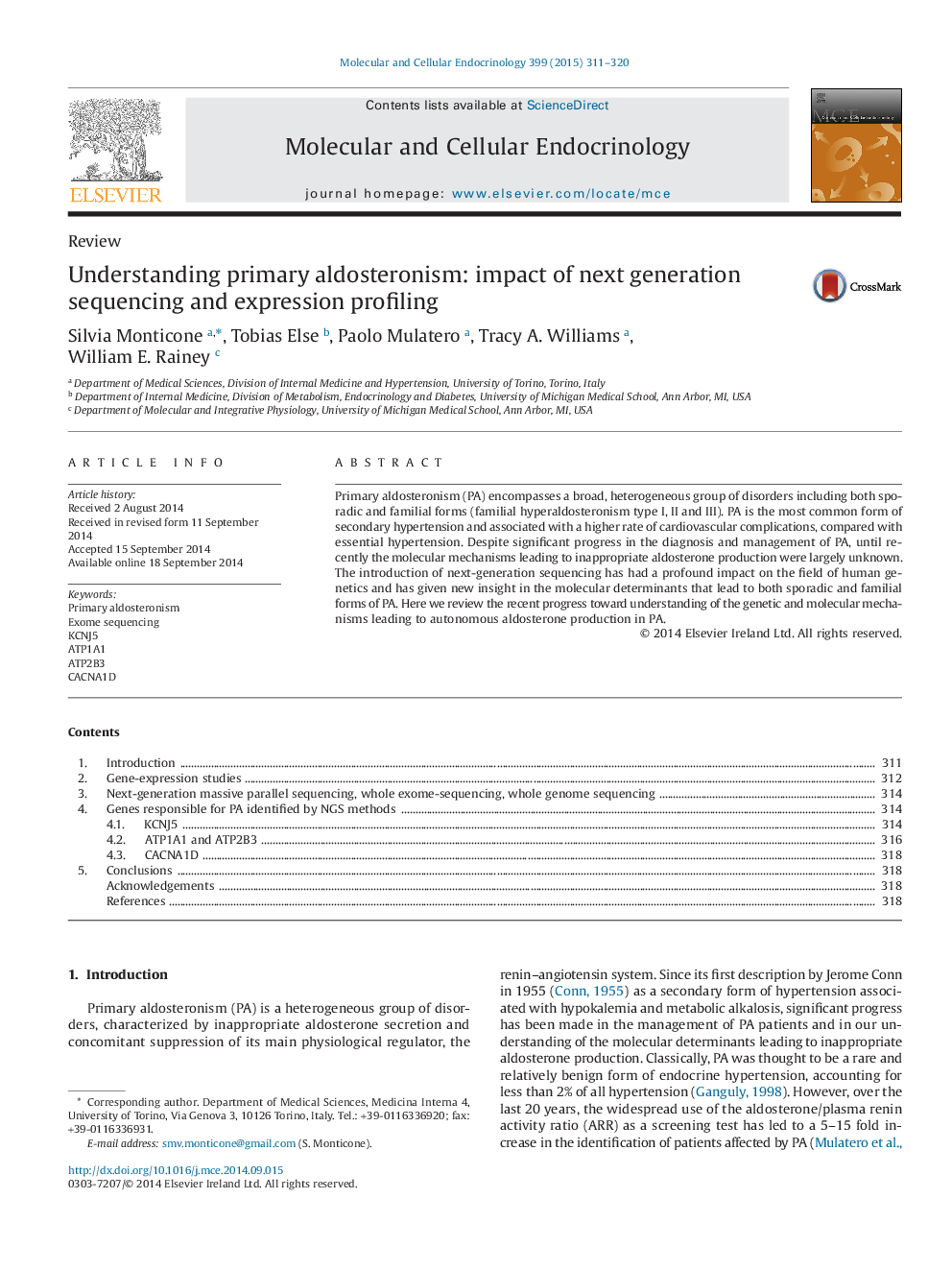| Article ID | Journal | Published Year | Pages | File Type |
|---|---|---|---|---|
| 2195942 | Molecular and Cellular Endocrinology | 2015 | 10 Pages |
•NGS-based methods increased our knowledge of genetics and pathophysiology of PA.•Somatic mutations in KCNJ5, ATP1A1, ATP2B3 and CACNA1D are present in over 60% of APAs.•Germline mutations in KCNJ5 are causative of familial hyperaldosteronism type III.
Primary aldosteronism (PA) encompasses a broad, heterogeneous group of disorders including both sporadic and familial forms (familial hyperaldosteronism type I, II and III). PA is the most common form of secondary hypertension and associated with a higher rate of cardiovascular complications, compared with essential hypertension. Despite significant progress in the diagnosis and management of PA, until recently the molecular mechanisms leading to inappropriate aldosterone production were largely unknown. The introduction of next-generation sequencing has had a profound impact on the field of human genetics and has given new insight in the molecular determinants that lead to both sporadic and familial forms of PA. Here we review the recent progress toward understanding of the genetic and molecular mechanisms leading to autonomous aldosterone production in PA.
